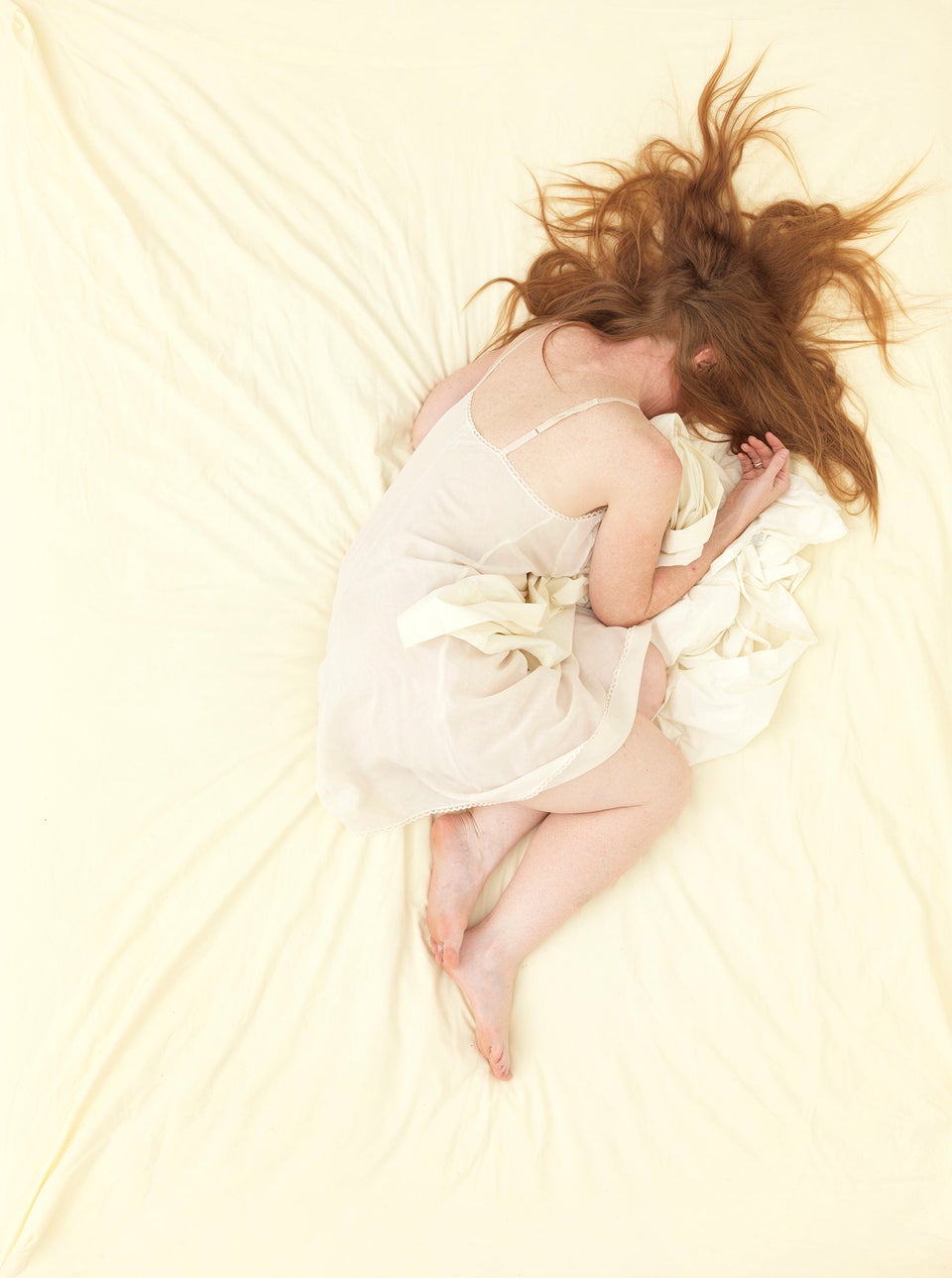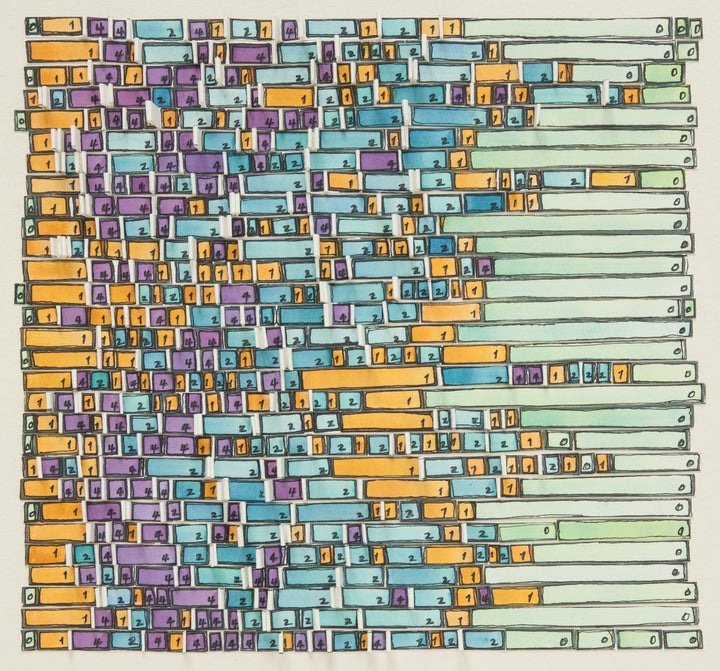
We track a lot of data about ourselves. Steps walked, stairs climbed, heart rate and, if you wear an Apple watch, skin temperature.
People don’t know what to do with it, artist Laurie Frick told The Huffington Post. Some people get creeped out by all the data. Some people find it uncomfortable. Yet, according to Frick, “it’s the secret about who we are.”
“I think in the future we’re going to consume our data as art,” she said. “I think it’s going to be irresistible.”
Frick imagines a future in which that art is all around them. “It would be a feedback loop where you use art to talk to yourself about how you’re sleeping and all these other things that you measure about you,” she said. That thinking is part of what led Frick to create her series of drawings that reimagine her and her husband’s own sleep data.
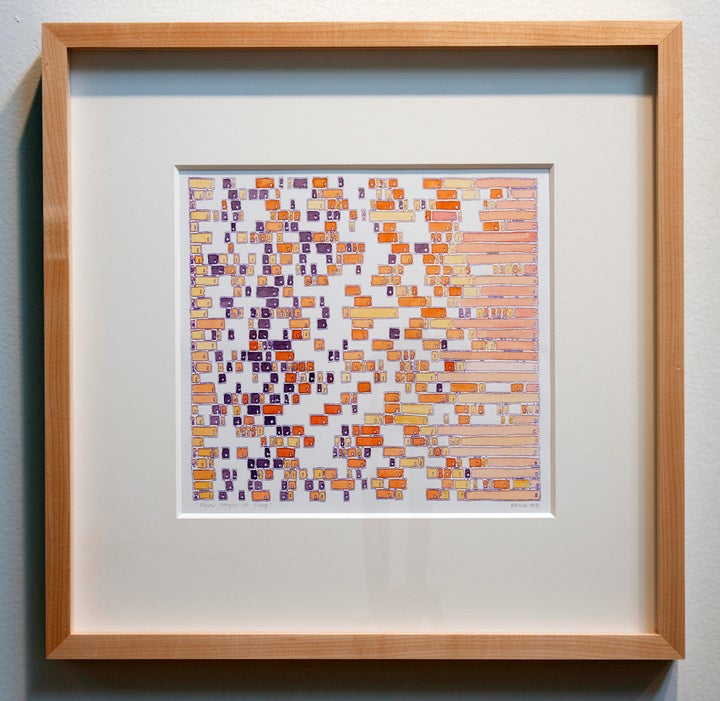
To understand something, measure it.
The couple started using EEG headbands to track their sleep in 2010. They ended up with a lot of detailed data about how much deep, light and REM sleep they got each night.
Tracking their sleep was part of a larger project to track how she spent her time, Frick said. “If you want to really understand something, you measure it.” And what she found was surprising: “Sleeping was not so different from waking ― you’re really busy.”
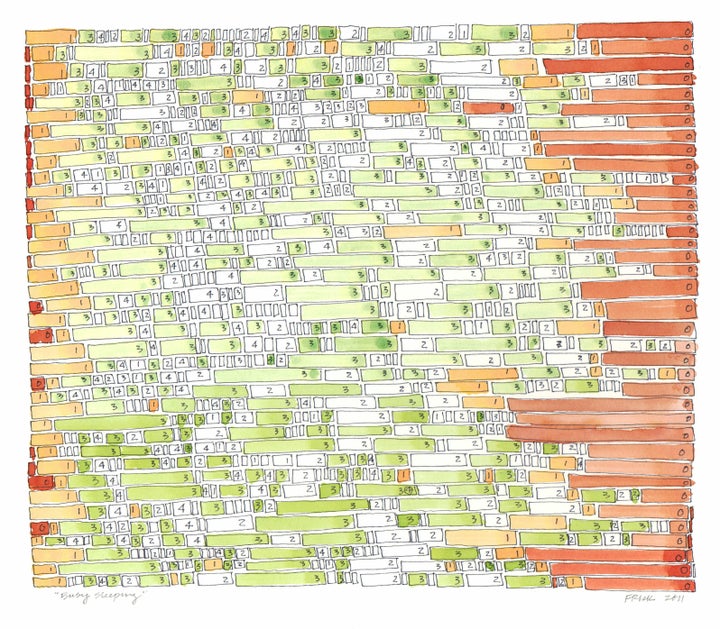
Frick also said the project helped her realize how personal sleep measurements were. “My husband told me he was a terrible sleeper,” she said. “He told me, ‘just wait ― you’re not going to believe it.’”
Frick’s husband’s sleep score, which measures sleep patterns, ended up being twice as high as hers, indicating unhealthy patterns.
“He didn’t remember his good sleep. He just remembered his bad sleep and when he had trouble sleeping. It was so him,” Frick said. “That was what struck me. Measuring sleep is like measuring your personality. Sleep is like a signature. It’s a fingerprint. It’s very identifiable.”

Recognizing how unique sleep data was led Frick to want to learn more about her own sleep ― the good, the bad and the REM. “I found it compelling because it’s something a lot of people don’t understand. There are weird myths about sleep,” she said.
What people tend not to know about sleep is that not getting enough of it really does affect your immune system. One recent study showed people who sleep five hours or less each night may be 17 percent more likely to catch a cold and 51 percent more likely to get the flu or pneumonia than people who sleep seven hours or more. And chronic sleep loss can increase risks of chronic diseases like diabetes, heart disease and some cancers.
“I used to be embarrassed to say I needed sleep. I wouldn’t want to say I needed to leave a party to go home to go to sleep.”
- Laurie Frick, artist
Frick said the project changed some of her attitudes about sleep and taught her some lessons, too. “I used to be embarrassed to say I needed sleep. I wouldn’t want to say I needed to leave a party to go home to go to sleep,” Frick said. “It’s as if you don’t have the mental toughness like the people who stayed up all night to get the job done. I felt less about myself because I needed my sleep.”
But that changed.
“Now it’s like, ‘Oh, no no no,’ I feel more confident about it,” she explained. “Now taking time to sleep, I realize, is part of your life and part of who you are. Sleep is sort of like putting clothes on. This is how I take care of myself.”
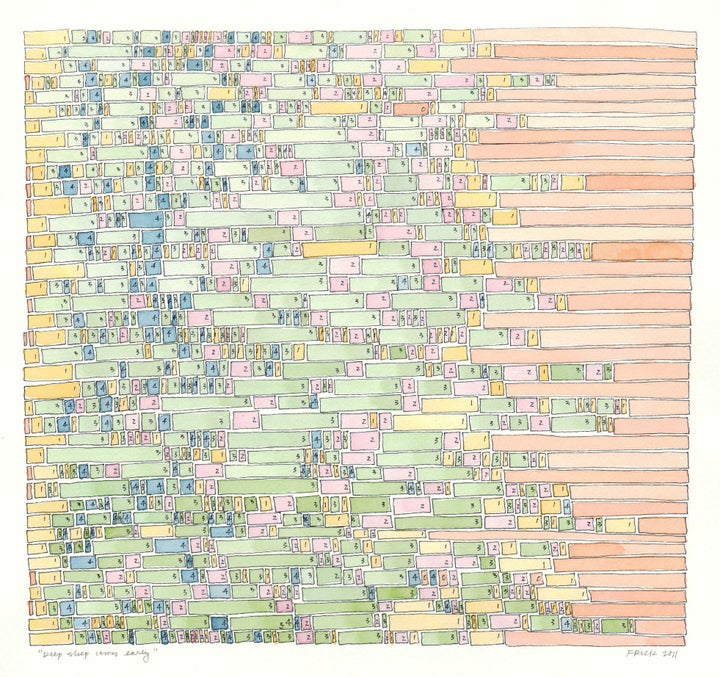
Getting rid of “trash sleep.”
To create her drawings, she puts all of her sleep data into an Excel spreadsheet. Then she makes a chart to color code the stages of sleep on a given night, like this one:

Each horizontal line represents one night of sleep. And each chart (and subsequent drawing) shows about a month of sleep. From the charts, she makes the drawings, using different colors to show the different stages of sleep.
Light sleep in most of the drawings is white ― and those sections get folded up to create a three-dimensional effect, which you can see below:

Unlike rapid eye movement (REM) sleep (which is critical for making and keeping memories) and deep, slow-wave sleep (which is important for restoring daily muscle and tissue damage) ― light sleep is, well, light. It’s pretty much the bridge between being awake and being asleep. If you’re awakened during light sleep, you might not even remember being asleep at all.
Frick considers light sleep as “trash sleep,” she said. “So I moved it out of the way and got rid of it.”
Reiterating that, in the future, she thinks more people will use art to understand their own lives, Frick called it “tech-based mindfulness.”
“Art can be another way for you to consume all this data that’s gathered about you,” she said. “Art is a way to talk about sleep, to look at it. It’s not so tech-y like medicine or health. It’s like this beauty ― part of who you are.”
Sarah DiGiulio is The Huffington Post’s sleep reporter. You can contact her at sarah.digiulio@huffingtonpost.com.

